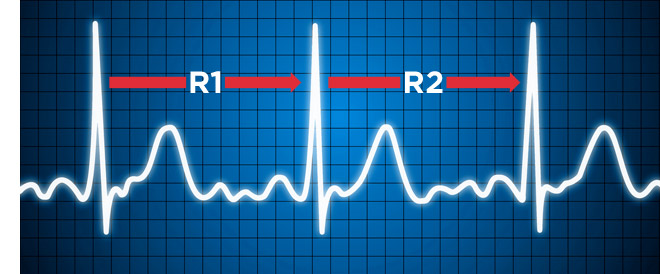Heart Rate Variability – HRV
Heart Rate Variability: Evidence-based diagnostics
In order to quickly target therapies that are effective in treating the autonomic nervous system, it is essential that such therapies be scientifically validated, quick and easy to carry out and easy to understand by both the therapist and the patient. It would also be of great advantage if both conventional and naturopathic therapy methods could be directly tested (even after just one application) for their efficacy (therapy control). One meaningful parameter that is used and recognized around the globe to describe the regulatory capacity of the autonomic nervous system is known as heart rate variability (HRV).
Heart rate variability is recorded in an HRV reading and then evaluated by HRV software. The HRV recorder measures the time intervals between heartbeats. The data is analysed using various mathematical methods and displayed graphically.

We differentiate between the following analytical methods:
- Time-domain methods
- Frequency-domain methods
- Non-linear methods, e.g. DFA – Alpha1
The complicated calculations are presented in simple and comprehensible diagrams. This is very important, since it allows people to gain a better and faster understanding of the relationships between the sympathetic and parasympathetic nervous systems.
There are extensive scientific studies on the links between heart rate variability and the development of disorders such as diabetes, burnout, COPD, chronic bronchitis, asthma, heart failure, hypertension, fibromyalgia, polyneuropathy, Alzheimer’s disease, Parkinson’s disease, tinnitus and many others.
The store of scientific data on heart rate variability has become so extensive and valid that HRV measurement is today firmly established as a basic diagnostic technique in the national health care guidelines as well as in various guidelines issued by health insurance companies for different disciplines.
More information about history of heartratevariability HRV you can find here (external link): Heart rate variability history
